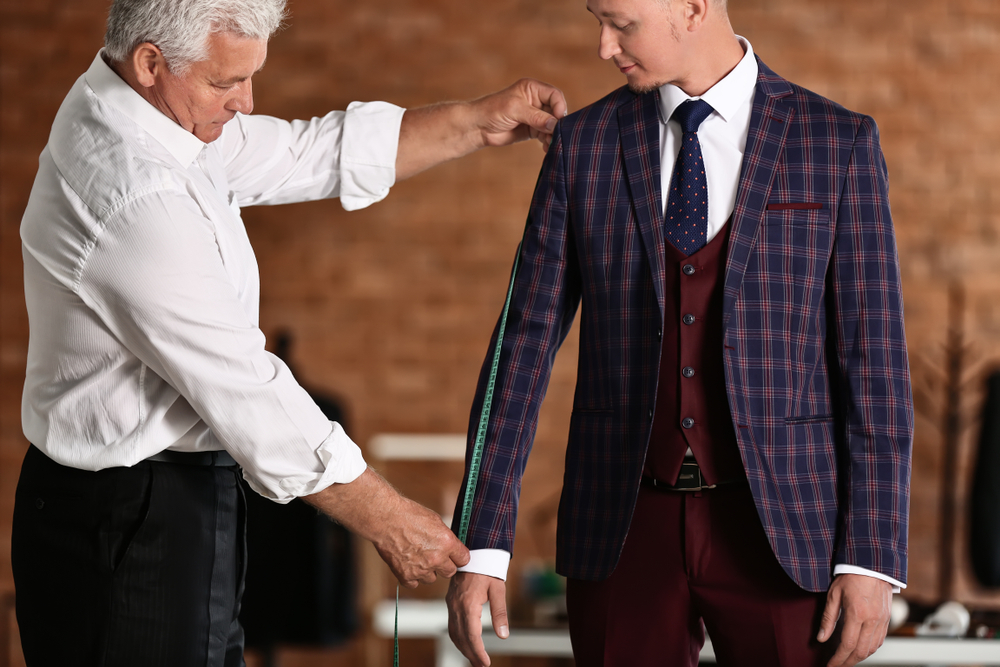
How Do You Make A Bespoke Suit?
Bespoke clothing is much more than a custom or made-to-measure suit or shirt. It is designed to fit you like a glove and move along with your body as seamlessly as possible. During the design process, your tailor will work diligently to capture your overall style, character, and personality. The finished piece will do much more than fit your physical body. It will move easily with you and highlight your best physical features and, at the same time, focus on your individual style. The key is finding a bespoke tailor who has an artistic eye for both fashion and anatomy.
Bespoke Clothing Starts With A Conversation
If a tailor is going to make a bespoke suit or other pieces of clothing, the key is getting to know their client. This type of clothing isn’t just made. It starts with a conversation. The tailor will ask specific questions so they can learn as much as they can about the person they will be designing the suit for. Bespoke clothing is a joint venture where both sides must contribute equally if the clothing is going to be as naturally fitting as possible. The more the tailor and client work together, the better the clothing will be.
Examining Physical Characteristics, Movement, And Style
During the initial meeting, the tailor will be examining everything they can about their client. During the conversation, the tailor will be looking closely at the anatomy and physical characteristics of the client. They will be studying how they move, how they sit, and how they walk or stretch their bodies. They will be looking closely at their style and how they hold their body when they are at rest. These subtle hints at style and movement will be accentuated as the bespoke tailor begins to design their new clothing. Small touches can be made that will make a huge difference in how an item fits.
Exacting Measurements
For a bespoke item of clothing to fit properly, several measurements must be taken. A suit coat will require 20 or more exact measurements of different areas of the upper body. Trousers will take five or more. While most measurements are taken during the initial fitting, it’s important to remember that multiple fittings will be needed to make a truly bespoke piece of clothing. Many of the measurements will need to be taken several times to ensure proper fit as the client moves in various ways. This ensures a more natural fit as the client moves during various activities like standing, sitting, walking, or reaching.
Repeat Fittings
As the clothing continues to progress, repeat fittings will be needed to ensure the item fits properly as more pieces are added. Measurements may need to be adjusted to ensure proper fit as the person moves in different ways. Over the time in which the clothing is being put together, meeting for repeat fittings will continue to ensure the clothing is put together as precisely as possible. This ensures an impeccable fit that hugs the body and defines the person’s physical characteristics. During the final fitting, more measurements will be taken, and the tailor will look for any areas where last-minute adjustments will need to be made.
The Design And Creation
After the initial conversation and physical evaluation, the tailor will begin to design the pattern and cut the fabric. As the pieces are first put together, the tailor will again look at the person’s body to find areas that the clothing will define and highlight. By carefully studying the body and how the clothing begins to come together, the tailor can allow for more space in certain areas. This gives the person more freedom of movement and ensures that the clothing looks as natural as possible. The tailor will continue with this process as the clothing continues to come together. Adjustments can be made as needed until, finally, the last few touches are put in place.
Adding The Final Touches
During the final fitting, a bespoke tailor will ensure all the measured areas fit correctly. He will also evaluate how the garment falls as the person moves in various ways. If any adjustments need to be made, final measurements will be taken, and the garment will be adjusted as needed. All of the final touches will be added during this time, including the buttons and any other elements the customer may request. Once all of the final steps have been completed, the garment will be given to the client to take home. They will receive a detailed list of steps to take to properly care for their bespoke clothing.
Caring For Your Bespoke Clothing
The care your bespoke clothing requires will depend significantly on the fabric used to create it. When you pick up your garment from your tailor, you will receive a list of care instructions that will need to be followed to the letter. In most cases, it is recommended that bespoke clothing be dry-cleaned in order to preserve its shape, texture, and form. Most high-quality fabrics will experience some degree of damage over time if put through a washing cycle at home. The delicate nature of most fabrics requires a more gentle form of cleaning. Your tailor will be able to advise you on proper cleaning methods and provide you with additional instructions when it comes to preventing general forms of wear and tear.
Peter Panos has provided bespoke tailoring services to his clients for over 50 years. His attention to detail and ability to customize each garment to perfection is why many of his clients return to him again and again. He is known all along the West Coast for his exceptional work and courteous customer service.
Tags: bespoke suits
Categorised in: Bespoke Suit, Tailored Suits
